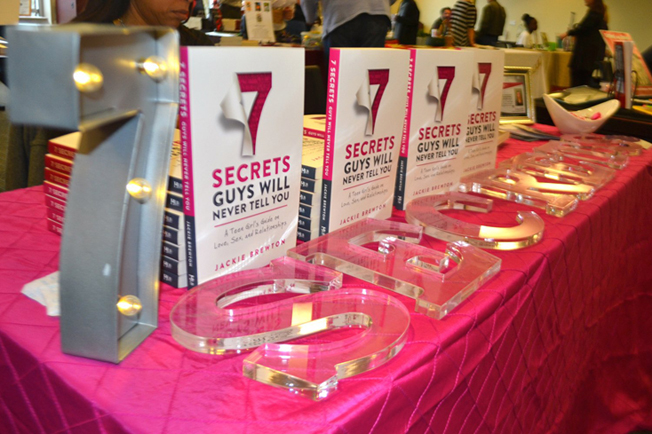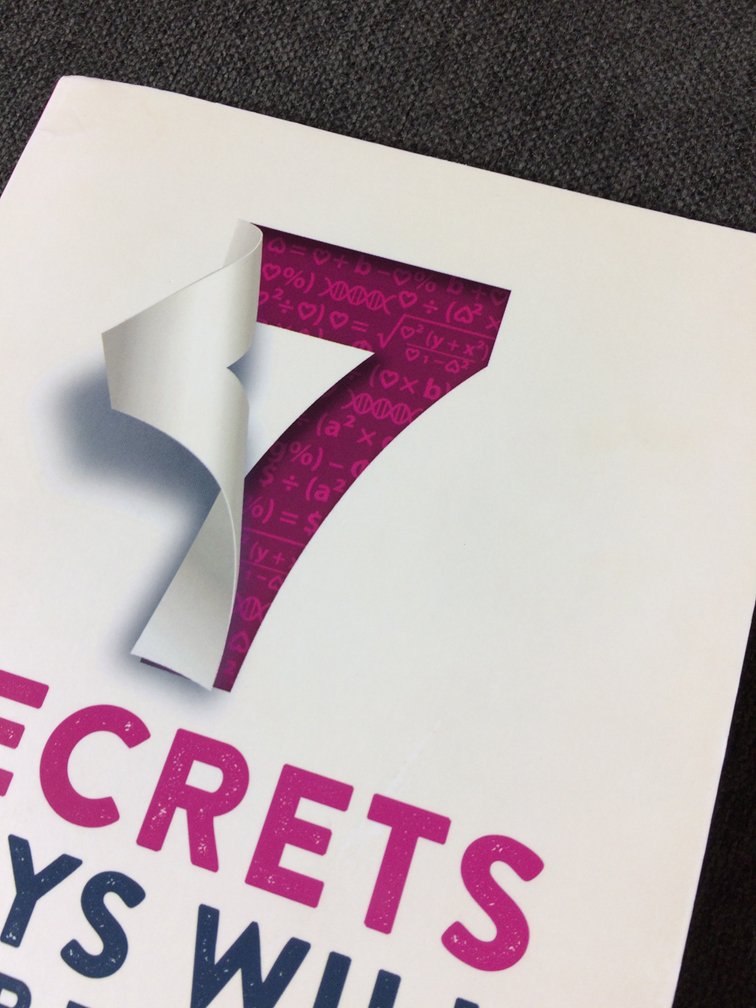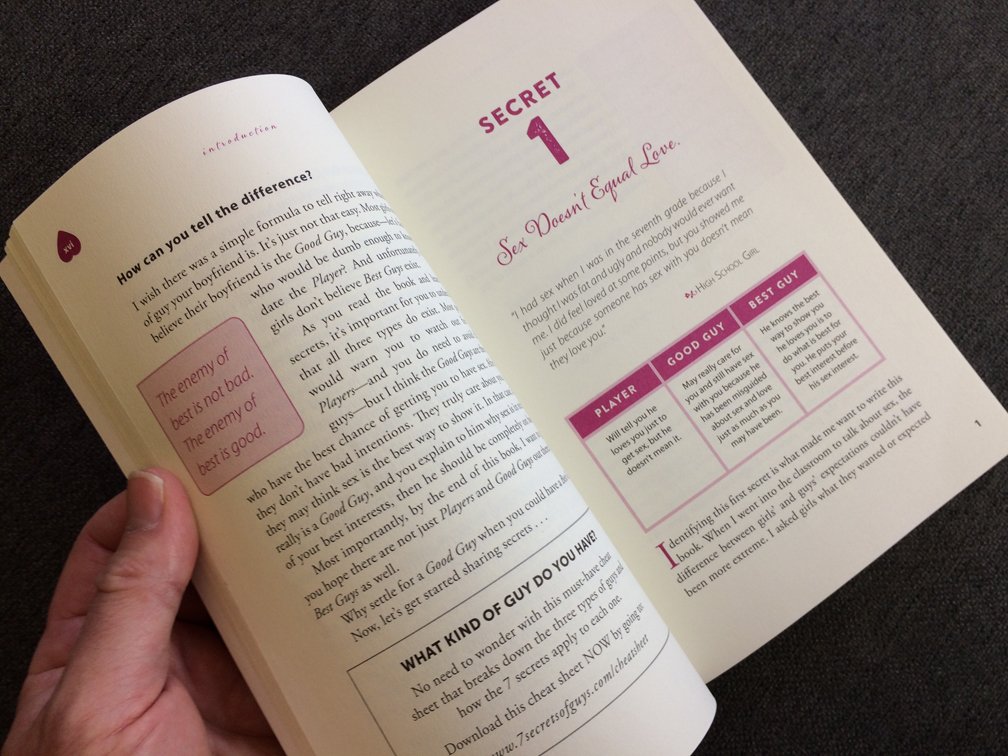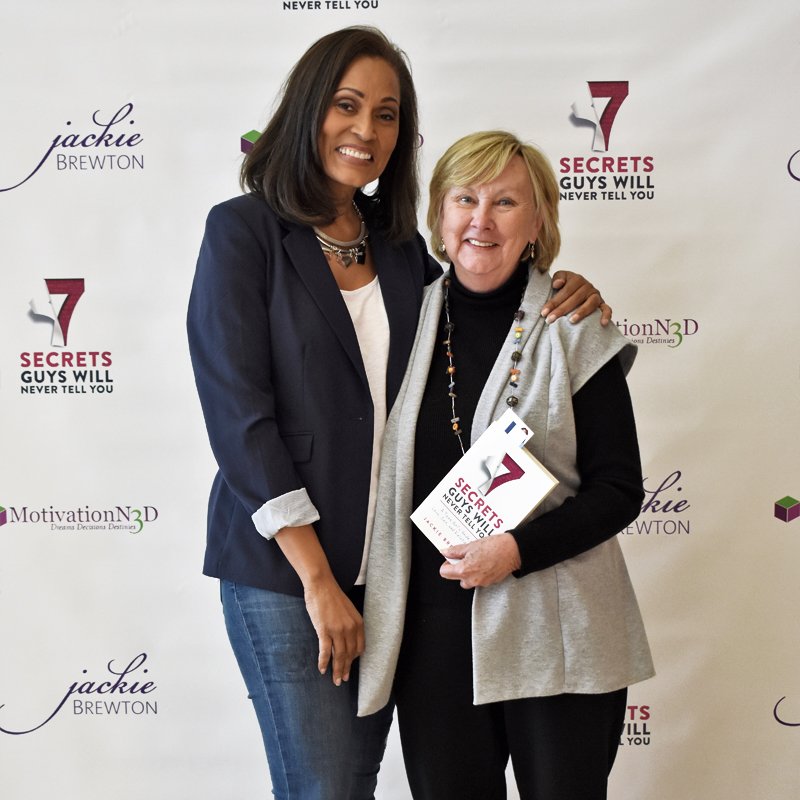One of the great things about my job is that I get to work with decision-makers and experts in a variety of fields, people who make a positive difference in the lives of others or who are on their way to becoming influential. Jackie Brewton is one of those accomplished people—she is the go-to person for people and institutions who need a motivational speaker and teen relationship expert.
If you’re a teen or a parent of teens like me, her book, 7 Secrets Guys Will Never Tell You: A Teen Girl’s Guide on Love, Sex, and Relationships has obvious value.

When I got the call from Jackie, she had already worked with a designer on the cover, but the production values were lacking. This seems to be happening to a lot of authors. In the last two years, I have seen an increase in calls from people who have hired designers who, it turns out, could not complete the project in a satisfactory way or who have simply gone missing before the job was finished.
From my perspective, Jackie is obviously an accomplished person with a personal brand that matters. My advice was to take the project to a higher level. This process would involve three things: first, refine the cover concept and give it higher production values. Second, add value to the book with a page design that would be reader-friendly, communicate the book’s central concept, and be visually appealing to her audience. Thirdly, use an enhanced print strategy.
To communicate the book’s subject matter—seven secrets about teen relationships and sexuality—I developed a graphic for the cover that combines DNA with heart symbols and numbers in the design of a formula. The number seven appears to peels back to reveal this formula (the peel-back illusion was part of the original design concept).

In the interior page design, the up-right and inverted hearts were incorporated into the running heads. Rather than have pages filled with nothing more than a long stream of text, design features are added to enhance the page layouts. Pull quotes are added to help draw the reader into the explanations. Design elements are used to make the different information categories in the book stand out—dialogues, statistics, special features, and tables with comparisons. These features are made to stand out by adding a second spot color in the print process.

“I can’t tell you how many people have commented on the wonderful job that you did with the design. I’m very pleased with how it turned out. THANK YOU again!” —Jackie Brewton
Always do the math.
Print-on-demand (POD) has revolutionized self-publishing. But is it the best choice? It allows authors to avoid large upfront print costs and simply order books one at a time. This sounds great, and there are some situations when it is a good option. What most self-publishing authors fail to recognize is that the unit price is too high to be competitive and the print options are so limited that the books simply fail to impress buyers who have better options. Offset printing provides more options—better printing at lower costs. This is one of the reasons POD books are rarely stocked in bookstores and professional publishers rarely use the method.
Even though Jackie had a book that could easily be printed POD as a black and white book (it had only texts and graphics—no photos), she could add value to her book by using offset printing instead. That would allow her add another color to enhance the interior and add special effects to the cover, such as a spot varnish, foil, or embossing—options that are simply not available in POD. What’s more, doing her book in B&W using POD would have cost more! For a book that size, the POD unit costs is around $3.40–3.50, or $9.20 with shipping and handling. For example, 1500 copies in POD, with shipping, would be around $5300. By comparison, the same book with 2-color printing and special effects would be around $2.59, or $3885 for 1500 with shipping (36% less). Also, the offset print unit price drops as the print quantities go up.
With lower costs and higher quality her book would stand apart as superior even to other professionally published books in her category which are only back and white. Publishing is very competitive. But done right, the results can be amazing. Only a few months after the books came out, I received a kind letter from Jackie with photos of her book launch and the news that she had orders that already exceeded 3000 books:
“Hi Michael, I hope you’re doing well! I thought about you today and wanted to give you an update on the progress of the book. I’m attaching this link with pictures from my book launch as well as a picture from one of my book signing events. I’ve also attached a picture with my high school English teacher that I mention in the Acknowledgements… I’ve received two large orders from agencies, totaling over 3,000 copies…”
That’s definitely the kind of update I like receiving.

It would not surprise me if she sold 100,000 or more copies of this book.

Bear in mind that even a small quantity of 3000 copies is close to $48,000 in direct sales or $28,800 at 40% wholesale. The upfront investment necessary to create a professional product pays off.
Jackie’s mission, of course, is about more than book sales. She wants to have a positive influence in the lives of teens, and the success of her book means she can reach a much larger audience.
It’s fine to self-publish, but you still have to compete with publishers who have respected brands, expertise, and experience. To succeed you need a strategy to make your book stand out in its category. Do a good job developing your content and work with book professionals who follow publishing best practices. That way, you’ll create a book that book buyers and reviewers will recognize as a quality product.
“Almost everyone who sees the book comments on how good the cover and interior look. I participated in an Indie Author Book Fair in Athens, GA and met an editor and a graphic/book designer. They both remarked about the great job that you did. Thanks again for making my book look like a traditionally published book. You were definitely a godsend.” —Jackie Brewton
Subscribe to my blog and follow me on Twitter to hear more self-publishing success stories.